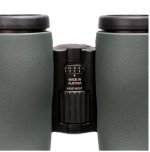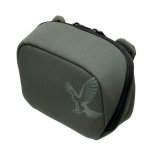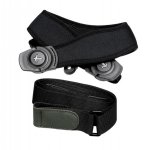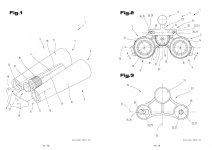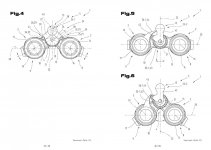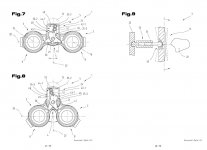Hello,
however, Dennis is not entirely wrong with his advice that the ELs sell extremely well, that is of course not only due to the sharp edges but also!
I myself also prefer the Flatfield glasses, my impression, the overall sharpness of the image makes it appear more harmonious and balanced.
I had the Zeiss 7x42 Victory for a while, due to the lack of edge sharpness and extreme astigmatism it spoiled my vision, I sold it.
When I look through binoculars with normal edge blurring for a while and then switch to Swarovski 8.5x42, I always think what an incredible optical performance!
It is not so easy to say that sharp edges are unnecessary because you only look through the middle anyway, flat fields are becoming more and more popular, why only?

Andreas
Apologies for dredging the edge performance thing from way back in the thread, but I find the perception of edge performance in myself and other users, and the issue of its desirability in binoculars, quite interesting.
I wear glasses, so if my eye travels beyond the area covered by my glasses everything blurs out. But within those limits my perception of sharpness is pretty good - not as sharp as dead center, but pretty decent. I would say, looking at the diagram that denco (please excuse me while I go and wash my mouth out with soap...) attached to his
post #490, that my perception of sharpness over the central, paracentral, macular and I think most all of the "near peripheral" regions is pretty good. That's just under 80 degrees AFOV, and because my own personal "sweet spot" is reasonably good, I do often move my eyeballs when searching for things within that sweet spot, rather than moving my head. I read a book, magazine or computer monitor similarly.
When using binoculars, after having experienced binoculars that are sharp to the edge, I do notice when the edges are less sharp. I can't say that I take in the entire field of view all in at once, like denco says he does; but I can see why he says that (did I really just say that?), because I normally make myself aware of what's in that central and near peripheral sector by flickering my eyes around - but that is a pretty quick process in real time (I wouldn't say instantaneous, but a process that takes place over only a few seconds). When using binoculars, I do the same flickering around, but mostly within the limits of the binocular's sweet spot. A binocular with a smaller field of view but large sweet spot, therefore, can to some extent compensate for one with a larger field of view but smaller sweet spot - because that larger sweet spot increases the actual zone that my eyes spend most of their time scanning to a comparable or sometimes even greater level. Binoculars that have the so-called field flatteners achieve the effect of being sharp virtually all the way to the edge, and, like Condomat in the post I quoted above, I do notice this - to me the effect is that what I see is almost all sweet spot. I have tried my 8x42 FL black alongside my brother's 8.5x42 Swarovision on several occasions and when doing so I find the superior edge performance of the latter does makes itself apparent, although I quickly adapt back to the FL (which is an excellent binocular in its own right, more than good enough for me).
That said, a larger field of view, even if not sharp to the edge, is still useful, as motion beyond the sweet spot can still be detected in one's peripheral vision, and may alert you to something interesting. I also think that a larger field of view, even though not sharp to the edge, is aesthetically pleasing. The perception (and I guess the reality too) is that one is seeing more, and it helps give that "open window" feeling. Binoculars that combine a large field of view with edge sharpness most closely match the natural sweet spot of my eyes, and my experience when looking through the 10x50 WX, especially when tripod-mounted, is almost as though my natural vision has been magnified. Presumably the NL is designed to offer a similar sort of experience.
It would be interesting to hear from other users how their sharpness perception is across their naked eye AFOV, and how they observe both with and without binoculars. It's pretty clear from this and other discussions that edge performance is a quality that some users appreciate a great deal, and others don't particularly care for. I recall Alexis Powell has said he flickers his eyes around the field of view of his binoculars, while others, it seems, prefer to move their entire head in order to keep things in the center field. The differences between how we observe must be part of the reason why some of us find edge performance more important than others.
Edge performance, its perception by us users, and its desirability in binoculars is one of these subjects that deserves a separate thread. I've read, and found very interesting, three discussions on field flatteners (
here ,
here and
here). One thing I don't fully understand, though, is that, per
this post by jring,
"in order to get edge to edge sharpness over a wide true field of view, field flatteners are very much necessary". Yet it seems possible to design binoculars with a large/very large sweet spot without the use of field flattening lenses. Can anyone explain how a large sweet spot without the use of field flatteners is achieved?









